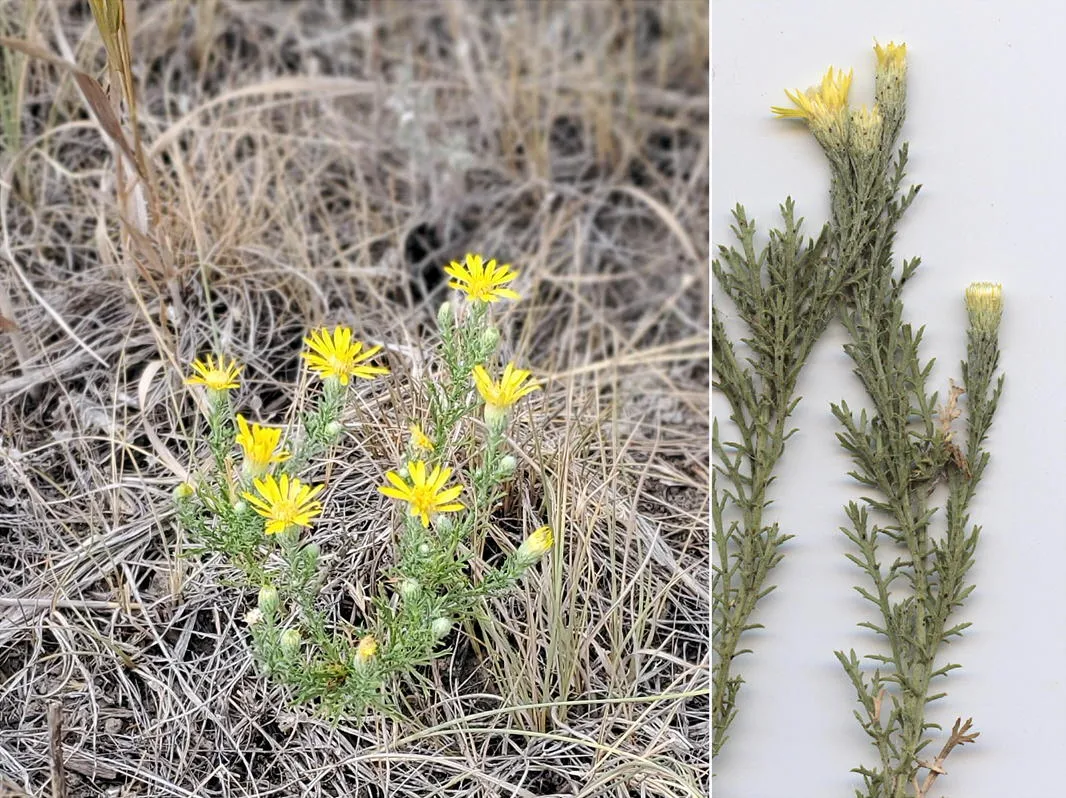By Tom Schweich
With a watchful eye for a small, yellow-flowered subshrub among the dry grasses, you might find “Spiny Goldenweed” — Xanthisma spinulosum (Pursh) D. R. Morgan & R. L. Hartm. blooming now. I have seen it on Eagle Ridge, and in Apex Park, and most recently on Schweich Hill. During the “Save the Mesas” campaign of the mid-1980s it was found on South Table Mountain, though I have not seen it there. It is probably in all of Golden’s open spaces, but its small size and late blooming season may cause it to be overlooked. State-wide, it grows occasionally throughout Colorado, except for the northwest corner.
Both the common name “Spiny Goldenweed” and the scientific name Xanthisma spinulosum are accurately descriptive of this plant. Xanthisma is from the Greek "xanth" meaning "yellow" and "isma", the result of an action, i.e., being dyed yellow or just being yellow. Spinulosum describes the sharp little spines on the tips of the finely divided leaf lobes.
The first scientific record of our plant was a collection by Lewis & Clark (1804) on the Missouri River in what was then called the Louisiana Purchase. Thomas Nuttall (1811) also collected our plant on the Missouri River and took seeds back to England. Fraser’s Nursery in London was selling live plants in 1813. (I wish a Colorado nursery sold plants to the state’s gardeners.) Unfortunately, when Nuttall (1813) proposed the name Sideranthus pinnatifidus, he gave no description. This made his name an “empty name” (nomen nudum) that was not accepted.
Frederick Pursh proposed the first valid name for our plant — Amellus spinulosus Pursh — when he published the Lewis & Clark collections in his Flora of North America (1814). As botanists worked out the evolutionary relationships among plants in the late 19th and the 20th century, our plant was variously placed in Aplopappus, Haplopappus, and Machaeranthera, until modern DNA analysis showed that our plant is a member of the group named Xanthisma, giving us the modern name of Xanthisma spinulosum.









